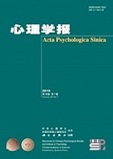Temporal distance, social distance and probabilistic distance are three basic dimensions of psychological distance. It has been proved that different kinds of psychological distance have similar effects on cognitive representations of events. In general, distant events are represented as high-level construals, whereas near events are represented as low-level construals. As events become more distant, the high-level construals become more influential in shaping preference whereas the low-level construals become less influential (Liberman, Trope, & Stephan, 2007; Liberman, & Trope, 2008; Trope, & Liberman, 2010). This study investigates the effects of temporal, social and probabilistic distance on intertemporal choice and risky choice. We hypothesize that different kinds of distance have similar effects on intertemporal and risky choice, based on the assumptions that these three kinds of distance share the same nature as psychological distance, and that intertemporal choice and risky choice have common processes of option representation and weighting. When psychological distance increases, money magnitude as high-level construal becomes more influential while time and probability as low-level construals become less influential (Sagristano, Trope, & Liberman, 2002; Trope & Liberman, 2003). Therefore, participants in distant conditions would choose delayed and risky alternatives with larger monetary value. Experiment 1 investigated the effect of temporal distance on intertemporal and risky choices. Participants were told that they would participate in a visual experiment, but before that they needed to make an intertemporal choice as their rewards between “¥50 immediately” and “¥90 in 3 months” (experiment 1a), or between “¥50 for sure” and “¥200 with the probability of 20%” (experiment 1b). In near condition, the experiment would be conducted soon, and in distant condition the experiment would be conducted in 6 months. Experiment 2 investigated the effect of social distance. In near condition, participants would make choice for themselves, and in distant condition, for other people. Experiment 3 investigated the effect of probabilistic distance. In near condition, participants were told that they would participate in the experiment with 90% probability, and in distant condition, with 10% probability. The options of intertemporal choice and risky choice are similar to experiment 1. The results show that no matter what kind of distance was involved, there were more participants in distant condition who chose delayed or risky alternatives than those who did in near condition, which confirms the hypotheses. The similar effects of temporal, social and probabilistic distance on intertemporal and risky choices suggest that intermporal and risky choices share common psychological process, and these three kinds of distance are homogeneous psychological distance.




